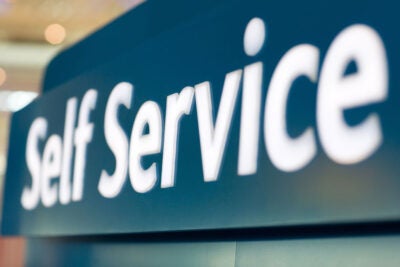Direct ad sales are a lucrative business for many publishers. But fulfilling direct sales is a tedious process that requires heavy investment in time and manpower.
For American City Business Journals (ACBJ), which earns about 90% of its revenue from direct sales, this problem was acute. The media company publishes 40 business publications, including the Houston Business Journal and San Francisco Business Times, and works with about 3,000 advertisers per month. Because its content focuses on local business news, it mostly works with local advertisers that prefer to buy direct, said SVP Ryan Whittington.
But direct sales involve a lot of emailing back and forth to provide advertisers with order details, delivery deadlines, creative specs and performance reports. And because direct sales require a more manual fulfillment process, they lack the scalability of programmatic auctions, which can be completed almost instantaneously. So ACBJ is looking to invest in technology that can streamline its direct business as much as possible.
“Our goal is to make our sellers more efficient, so they can go after bigger deals and spend more time with our biggest advertisers,” Whittington said.
Post-sales automation
In a major step toward that goal, ACBJ integrated FatTail’s AdBookPORTAL self-serve platform into its post-sales workflow. The platform allows clients to upload ad creative, confirm placements and access campaign analytics through a single interface, without the need to fire off endless strings of emails.
ACBJ initially integrated the platform in mid-2021, and it has already been used by more than 5,000 advertisers. So far, ACBJ has used the platform to process over $14 million in direct sales revenue. Clients log into the portal two times per month on average.
ACBJ’s goal is to get 80% of its total client base to use the self-serve platform so it can free up its direct sales team to provide hands-on service to the top 20% of clients, Whittington said. Currently, about 40% of its clients use the platform.
Although the platform automates away much of the tedium of direct sales, the fact that it’s a post-sales solution means ACBJ can still present a human face in its direct ad business. The publisher’s sales team still handles the actual selling of ad inventory, but after the sale is made, the advertiser client logs into the platform’s dashboard to provide campaign deliverables and to follow up on campaign execution.
Based on client feedback, one of the platform’s early standout features was how it streamlined payment processing, Whittington said. And ACBJ’s sales team also appreciates the new automated approach to payment. Since integration, ACBJ’s billing team is saving 4.5 minutes per payment transaction.
The platform also allows clients to upload their own creative assets. Because the interface can manage everything from display banners in different sizes to native placements and sponsored content, it decreased the complexity of working with different creative formats and simplified the “incredibly inefficient” process of collecting creative for print campaigns, Whittington said.
Being able to cut time spent on processing native placements is especially important, because to get one piece of sponsored content edited and posted can be a multiday process, and those placements are very in demand, he said.
Reporting and transparency
The campaign reporting aspects are also a key feature.
For example, the solution automatically uploads screenshots of ads served on ACBJ’s sites so advertisers can confirm ad placements. This eliminates the need for ACBJ’s direct sales team to manually take and send screenshots to clients to confirm fulfillment, which would otherwise be a major time sink, Whittington said.
The platform also includes basic analytics capabilities, such as impression counting. The platform sends alerts to advertisers informing them how the campaign is performing compared to their benchmarks, allowing them to A/B test and make adjustments.
To more effectively court direct business in a market where ad budgets are under pressure due to persistent questions about the health of the economy, ACBJ is banking on being able to provide advertisers with more transparency into the value of the inventory they’re purchasing.
For example, it’s common for publishers to package ad inventory for direct sales, Whittington said. The self-serve platform’s interface includes details about how ACBJ builds these packages.
And ACBJ is working with FatTail to add a few more features. One add-on will expand the platform’s reporting and analytics by integrating Microsoft’s Power BI data visualization software into the system. Features that streamline the campaign renewal process and use AI to make recommendations about which ad inventory would be worth buying again are also planned.
In addition, Whittington sees automation as a way to retain top talent by removing drudgery from their workload. “When you hire talented people, and they’ve got to open up all these emails, pull attachments and upload them – these are things I did back in 1999. Nobody wants to do that now, and nobody should have to.”
The direct sales team estimates it’s cut time spent on post-sales support by 10%. And clients receive better support on par with what advertisers their size can expect from walled gardens.
“Publishers generally have been a little bit behind in giving advertisers these campaign management tools,” Whittington said. But while other publishers may still be behind the trend, ACBJ can now offer advertisers the type of self-service experience social media platforms like Facebook and LinkedIn have been offering for years.



















